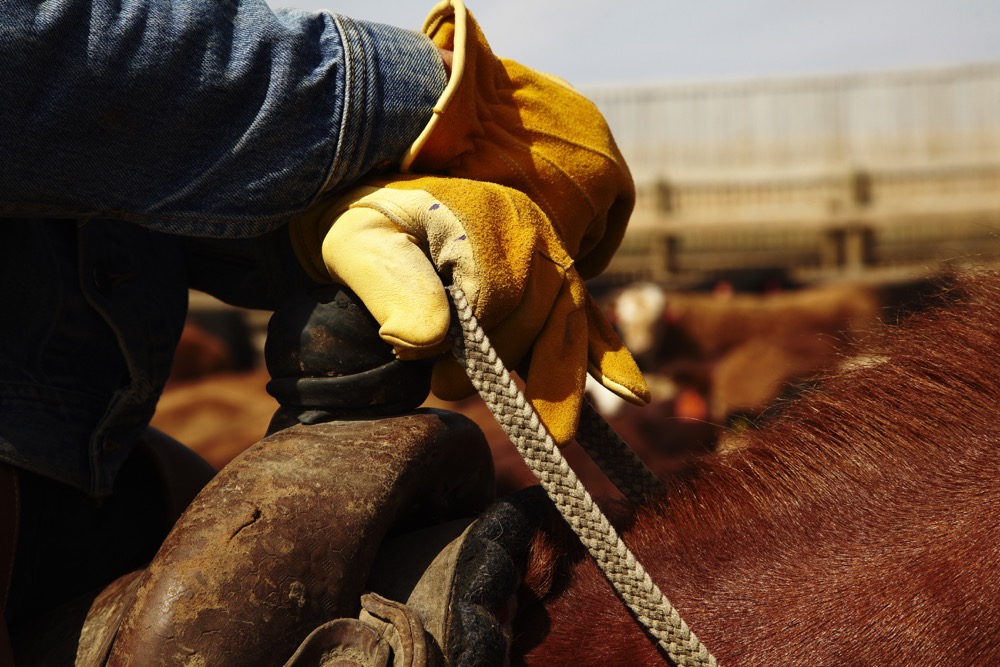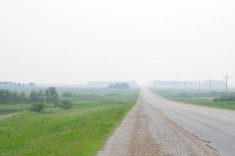Although frank mineral deficiencies and toxicities have been described in detail, little quantitative information is available to describe mineral requirements of beef cattle for a given physiologic state or level of production.
Most economic losses associated with mineral nutrition stem from less obvious circumstances like subclinical deficiencies. According to Dr. K. Olson at the department of animal sciences and industry, Kansas State University, problems with animal health or performance are frequently the result of interaction between one or more minerals in the diet and not attributable to deficiency or excess per se. Even more likely to cause economic harm is a mineral supplementation program that is mismanaged or overpriced.
Read Also

Effect of wildfire smoke on respiratory health in beef cattle
Of all domesticated species, cattle have the smallest relative lung capacity, making them particularly vulnerable to wildfire smoke.
It has been well established that selenium (Se) is an essential trace mineral for cattle. It is a component of several enzymes that are important antioxidants responsible for preventing cellular damage by free radicals produced by the body’s day-to-day metabolic processes. The function of selenium is closely interrelated with vitamin E within the body. As a trace mineral, Se is needed in very small amounts.
Selenium deficiency is common in many parts of Western Canada. Areas that used to be adequate or marginal in terms of forage Se have now been recognized as being deficient. Change in Se levels is insidious as feed and hay production increases. Agronomic practices like irrigation, higher production cultivars, legume production, fertilization (particularly sulphate fertilizers), and intensive grazing decrease the concentration of Se in feeds. Additionally, cattle have been selected to grow faster and mature quicker so Se requirements have changed.
Bottom line, there appears to be more Se deficiency problems in beef cattle today than in previous decades. Dietary Se content influences recommendations for provision of vitamin E in the diet. The sulphur content of feed and water influences selenium requirements as does the form of Se consumed. Dietary calcium can also reduce selenium absorption in ruminants.
It’s been assumed for many years that selenium supplementation is important to animals grazing in geographic regions known to be Se deficient. Specific recommendations as to the level of supplementation required are all over the map. The margin of difference between an Se-adequate diet and one that has toxic levels is narrow, therefore, feed regulations restrict the amount of Se that can be added to feeds.
A recent article in the Canadian Veterinary Journal describes the selenium status of cows from 66 western Canadian herds near the end of the grazing season and describes the potential association of Se levels with reproductive performance when examined for pregnancy, calf viability during the subsequent calving season and the prevalence of degenerative myopathy (white muscle disease) at calving. Although data reported are decades old, they showed 10.6 per cent of cows were deficient in Se (less than 0.025 ppm in serum) and 86.8 per cent were marginal (less than 0.08 ppm in serum). Low serum Se was most often associated with thin cows on feed containing less than 0.2 ppm of Se, and from areas with black or grey soils with higher levels of precipitation. The study indicated serum Se levels at pregnancy testing were not associated with reduced reproductive performance. Lower herd serum Se was associated with increased risk of white muscle disease in the subsequent calf crop.
The selenium content of feeds is highly variable. In Alberta for instance, Se content of feed ranges from levels as low as one-tenth of that required by cattle to levels many times greater than required. Levels on pasture can vary greatly from month to month and from year to year. Alfalfa and mixed hay containing alfalfa contain higher levels of selenium than do grass, clover and cereal forages. Grains are typically lower in Se than forages. Approximately 45 per cent of alfalfa and alfalfa grass forages fall below recommended Se levels of 0.2 mg/kg, while 65 to 70 per cent of cereals and grasses are deficient. Approximately 90 per cent of barley grain samples contain less than recommended allowances. Additional vitamin E should also be given when selenium supplementation is warranted.
Dietary mineral analyses provide useful information if representative samples of all ingredients can be obtained. Actual chemical analyses need to be performed. Estimates are woefully inaccurate. Tabular values are not likely to be a reasonable indication of mineral intake by beef cattle. The antagonistic relationship of other minerals like molybdenum, sulphur, and iron also need to be considered. It is known beef cattle are highly selective about the pasture forage species they choose to eat. Given a choice, animals select a higher-quality diet in terms of protein and energy. Selectivity raises a question about selenium intake on pasture.
Procedures associated with directly measuring mineral status of animals can be costly and time consuming. There are different fluid and tissue pools in an animal’s body used to estimate mineral status. A number of scientists reports limitations to blood analyses, especially for copper and Se. Liver biopsies are considered the tissue of choice for assessing the status of trace elements in cattle. Then there is the question of how many individual animals must be sampled to develop an accurate picture of the entire herd.
It is generally agreed Se deficiency is a significant problem on the Prairies. Deficiency symptoms include white muscle disease, reduced resistance to diseases, birth of dead or weak calves, increased incidence of retained afterbirths, and lowered fertility. The minimum suggested allowance for selenium in the diet is 0.2 mg/kg of feed. Higher levels than this may be required in some instances. The answer is not simple or predictable.
Dr. Ron Clarke prepares this column on behalf of the Western Canadian Association of Bovine Practitioners. Suggestions for future articles can be sent to Canadian Cattlemen [email protected] or WCABP [email protected].















